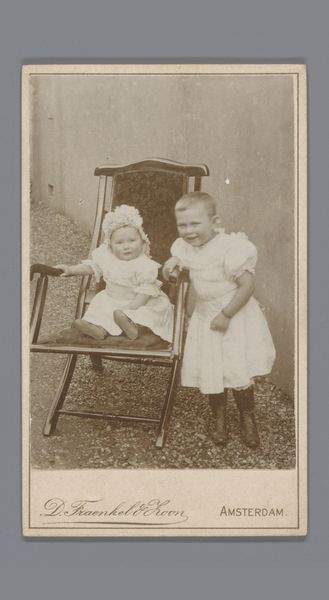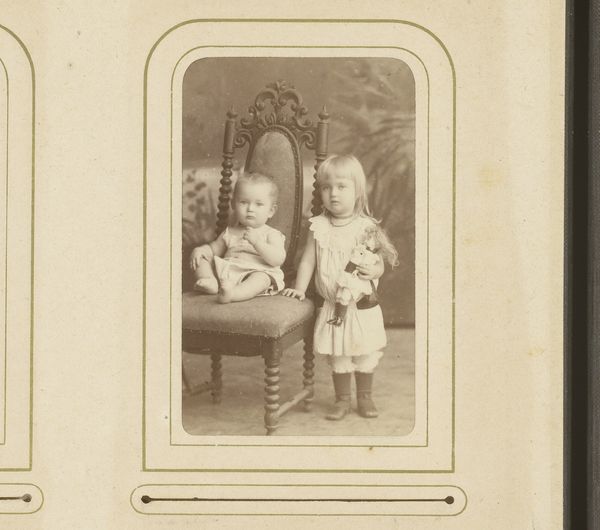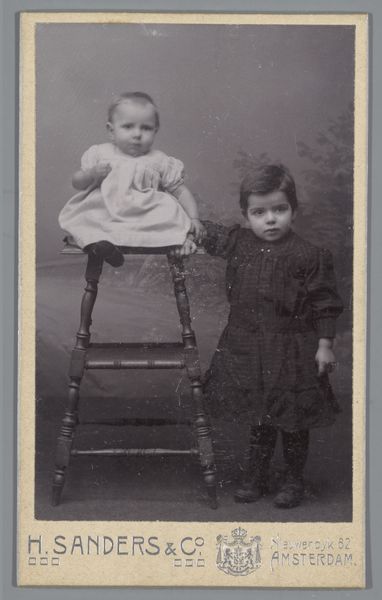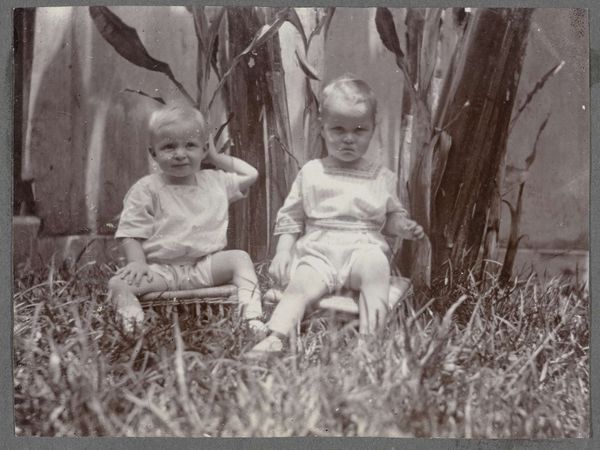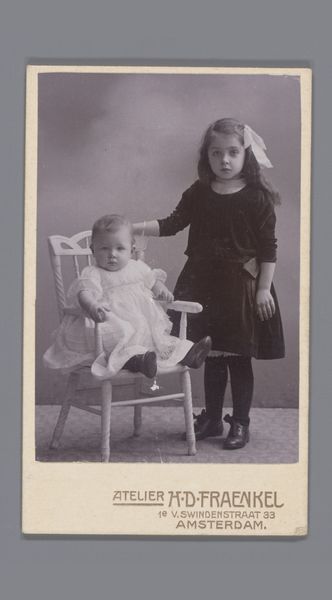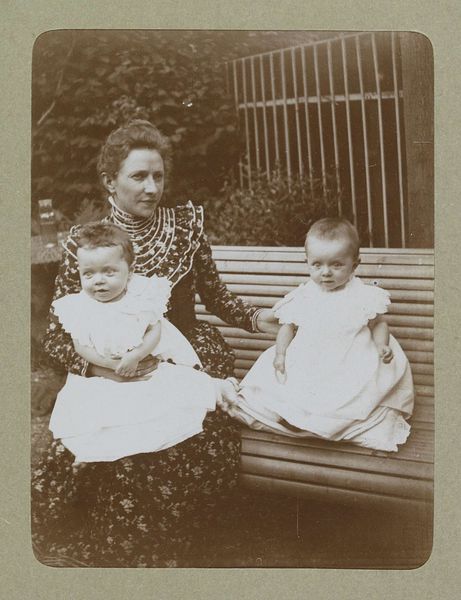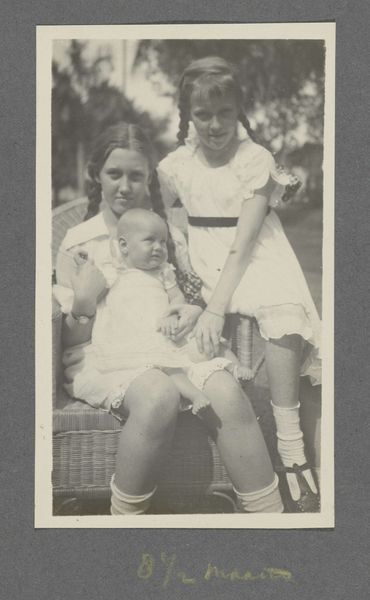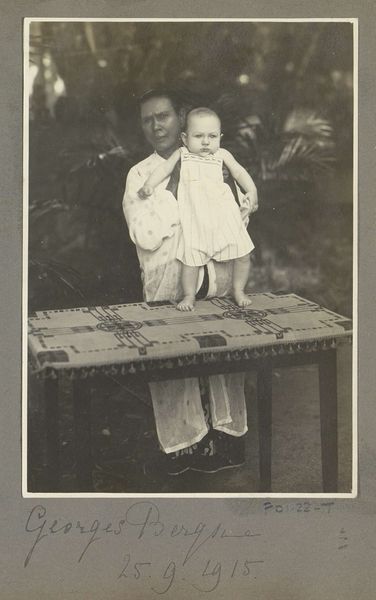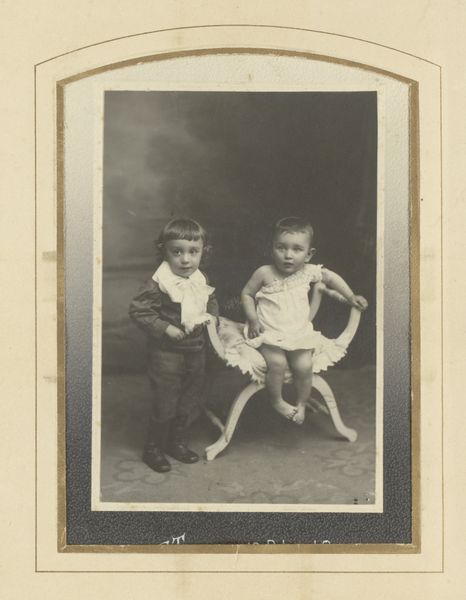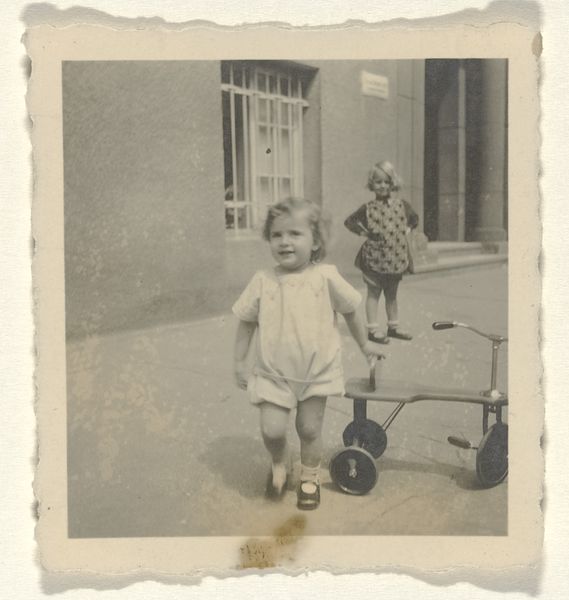
Twee peuters zittend op een doek in de openlucht, waarschijnlijk de tweeling Ad en Johanna van der Kop after 1901
0:00
0:00
willemcarelvanderkop
Rijksmuseum
photography
#
archive photography
#
street-photography
#
photography
#
historical photography
#
genre-painting
#
realism
Dimensions: height 73 mm, width 98 mm
Copyright: Rijks Museum: Open Domain
Curator: Here we have "Twee peuters zittend op een doek in de openlucht, waarschijnlijk de tweeling Ad en Johanna van der Kop," taken some time after 1901 by Willem Carel van der Kop. Editor: There’s a tender, somewhat solemn feel to this image. The soft focus and subdued sepia tones lend it a dreamlike quality. It's interesting how the details are captured— the texture of the fabric, the loose stones of the ground— it emphasizes the mundane setting despite the rather adorable subjects. Curator: Yes, and consider the production. Early photographic processes often demanded lengthy exposure times, influencing composition and encouraging stillness. These children are remarkably still for their age. The photograph presents them amidst simple props—a blanket, a small plant, some cloth toys. These were the materials immediately available, chosen perhaps for their textural interest or ease of procurement. It speaks to a specific economy of means. Editor: Beyond the immediate, though, look at the plant in the background, the texture in the ground, those neutral props. Everything anchors to the simple life. There's also the children themselves: The twin toddlers create an unavoidable doubling effect, resonating with themes of innocence, vulnerability, but also mirroring and identity. Curator: Indeed. What fascinates me is the level of craft inherent in early photography. We often frame photography as purely representational, but images like this, which likely come from the artist’s family archive, underscore the constructed nature of the medium. This isn’t a snapshot. Time and deliberation must have been dedicated to producing the print; to arranging the children, setting the light... it suggests both the preciousness of labor but also perhaps some family resources at disposal. Editor: The sepia tone, a consequence of the chemical processes involved, also carries a nostalgic weight. It triggers our associations with historical memory, imbuing the image with a sense of timelessness and connecting us to a specific cultural and artistic movement in portraiture and familial memory. The two sitting under a house plant evokes a primal scene, reminiscent of the garden of eden and first innocence of the twins. Curator: I agree. Analyzing the photo through this lens grants new perspectives. This wasn't simply documentation, but a crafted image of carefully considered objects, materials, and individuals produced with some skill. Editor: Absolutely. By paying close attention to visual cues and emotional responses, we can extract greater cultural resonance and expand our understanding of what these kinds of artworks really do mean.
Comments
No comments
Be the first to comment and join the conversation on the ultimate creative platform.
